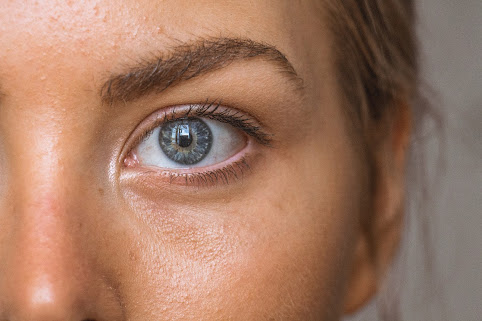How should atopic dermatitis be managed in children and adolescents?
- Get link
- X
- Other Apps
How should atopic dermatitis be managed in children and adolescents?
The management method of atopic dermatitis (AD) in children and adolescents
1. Skin Care
Moisturizing the skin regularly can help to reduce dryness, itching, and inflammation associated with AD. Emollients and moisturizers should be applied immediately after bathing when the skin is still damp, as this helps to lock in moisture.
2. Avoid Triggers
Common triggers of AD symptoms include environmental irritants, such as soap and detergents, and exposure to extreme temperatures. Avoiding these triggers can help to reduce the severity of AD symptoms.
3. Topical Treatments
Topical corticosteroids are commonly used to reduce inflammation and itching associated with AD. They come in different strengths and can be used as a cream, ointment, lotion, or foam. Calcineurin inhibitors, such as pimecrolimus and tacrolimus, are also used to treat AD and are particularly useful for sensitive skin. Anti-inflammatory creams containing ingredients such as ceramides, niacinamide, or glycerin can also be helpful in managing AD.
4. Oral Medications
In more severe cases of AD, oral medications such as antihistamines, oral corticosteroids, and immunomodulatory drugs may be prescribed. Antihistamines can help to relieve itching, while oral corticosteroids can be used for short-term management of severe flare-ups. Immunomodulatory drugs, such as cyclosporine, can be used in severe cases to suppress the immune response and reduce inflammation.
5. Phototherapy
Ultraviolet (UV) light therapy, also known as phototherapy, can be used to help manage AD symptoms. This involves exposing the skin to controlled amounts of UV light under medical supervision. UV light therapy can help to reduce itching and inflammation, and is often used in combination with topical medications.
6. Lifestyle Changes
Maintaining a balanced diet, getting adequate sleep, and reducing stress can help to reduce symptoms of AD. A diet rich in omega-3 fatty acids and probiotics has been shown to be beneficial for those with AD. Regular exercise, yoga, and relaxation techniques can also help to reduce stress and improve sleep.
It is important to work with a healthcare provider to determine the best treatment plan for a child or adolescent with AD. Treatment may need to be adjusted over time based on the severity and duration of symptoms, as well as any side effects from medications.
What should I do if the symptoms of atopic dermatitis do not improve?
the Step to take if the symptoms of atopic dermatitis (AD) do not improve
Review Triggers
Triggers, such as environmental irritants and allergens, can worsen AD symptoms. Reviewing your current triggers and avoiding or reducing exposure to them can help to improve AD symptoms. Triggers can vary from person to person, but common triggers include soaps, detergents, pet dander, dust mites, mold, and certain foods.
Consider Allergies
Allergic reactions to food or environmental allergens can worsen AD symptoms. Your healthcare provider may recommend skin prick testing or blood tests to determine if you have any allergies. If you have a confirmed allergy, avoiding the allergen can help to reduce AD symptoms.
Test for Skin Infections
A skin infection, such as impetigo or staphylococcal dermatitis, can worsen AD symptoms. Your healthcare provider may take a skin sample (culture) to test for bacteria or fungi. If a skin infection is confirmed, it will need to be treated with antibiotics.
Referral to a Specialist
In some cases, referral to a dermatologist or immunologist may be necessary for further evaluation and treatment. These specialists have expertise in managing AD and can provide additional treatments, such as phototherapy or immunomodulatory drugs.
In addition to these steps, it is important to maintain good skin care practices, such as keeping the skin hydrated and moisturized, and avoiding excessive scratching or rubbing of affected areas. Adopting healthy habits, such as maintaining a balanced diet, getting adequate sleep, and reducing stress, can also help to reduce symptoms.
Remember, it is important to be patient and work closely with your healthcare provider to find the best treatment plan for your symptoms. Avoiding self-diagnosis and self-treatment, as well as following the recommended treatment plan, can help to improve outcomes.
The case of the child patient with atopic dermatitis.
A 9-year-old child named Alex (pseudonym) is brought to a healthcare provider by his parents for evaluation of a persistent skin rash. The rash is primarily located on Alex's face, neck, and arms, and is characterized by dry, itchy, and red patches.
The healthcare provider performs a thorough physical examination and reviews Alex's medical history. It is discovered that Alex has a family history of atopic dermatitis (AD), hay fever, and asthma, which are commonly associated with the condition.
Based on the symptoms and examination findings, the healthcare provider diagnoses Alex with AD. The healthcare provider explains the condition to the parents and emphasizes the importance of avoiding potential triggers, such as environmental irritants and allergens, and maintaining good skin care practices.
The healthcare provider prescribes a topical corticosteroid to reduce inflammation and itching, and a gentle, fragrance-free moisturizer to hydrate and soothe the skin. The healthcare provider also recommends avoiding hot showers, using fragrance-free products, and wearing soft, breathable clothing.
The healthcare provider schedules a follow-up appointment in two weeks to monitor Alex's progress and adjust the treatment plan if necessary.
In this case, the healthcare provider has taken a comprehensive approach to managing Alex's AD, which includes avoiding triggers, prescribing medication, and offering lifestyle recommendations to reduce symptoms and improve skin health. By working closely with the healthcare provider, Alex and his family can take the necessary steps to effectively manage the condition and improve quality of life.
- Get link
- X
- Other Apps

